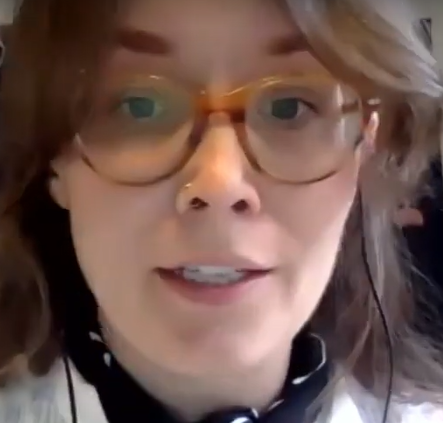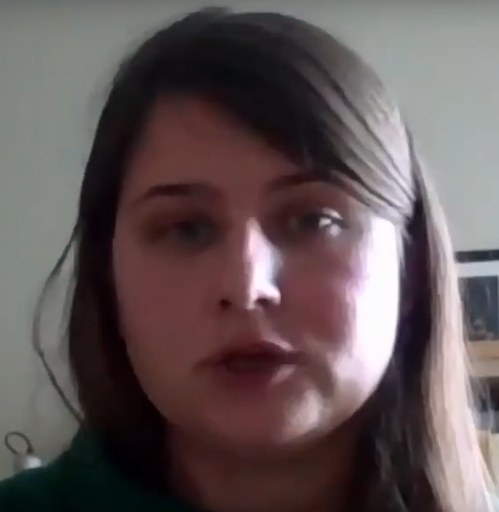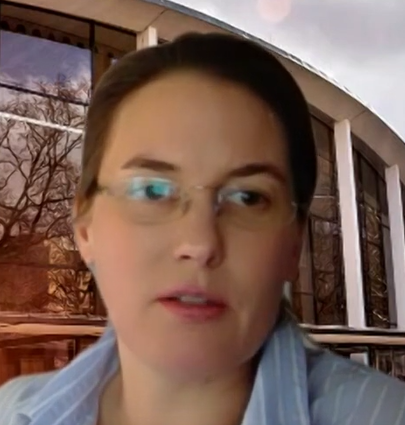Poster Presentations 1
The Volkswagen Foundation invited young researchers conducting research on the topic of the symposium to apply to take part in the conference with a poster. From the applications received, 19 projects were selected to be presented at the conference in four blocks. Four scholarship holders were unable to attend, but made their posters available in written form. These can be found in the "Posters without presentation" section. Unfortunately, the poster presentations could not be translated simultaneously. Three blocks were in English, one in German.
Sustainable regeneration of rural parish churches in Sweden

- Name / Titel
- Maria Nyström
- Funktion
- University of Gothenburg, Sweden
My contribution will discuss the possibilities of regenerating parish churches located in de-populated areas in rural Sweden. Departing from a case study of a recent regeneration project based on a Church-Museum partnership, issues of heritage, use, and protection will be covered. Historic churches enjoy strong legislative heritage protection in Sweden and are generally in a materially good condition. Despite this, demographic changes and decreasing membership numbers in the Church of Sweden, pose a growing threat to these buildings. As parishes struggle to manage their churches, new strategies to tackle this development are being explored. The case study concerns a project centered on a rural parish church in the remote village of Hamra in mid-Sweden. At present, the village has about 80 permanent residents and it is also the home of a late 19th-century wooden church in the center of the village. As the church is currently underused, the Parish of Ljusnan has collaborated with a local museum to explore extended-use options. The project sheds light on the possibilities as well as the challenges of regenerating a historic church in a socially and economically sustainable fashion. In particular, the professional roles and obligations of the Church-Museum partnership will be discussed. The results suggest that non-state heritage actors may contribute to a facilitated use and development of historic churches that do not require invasive methods.
The new dignity of disused churches: counter the throwaway culture

- Name / Titel
- Rūta Giniūnaitė
- Funktion
- Pontifical Gregorian University, Rome, Italy
The answer to the question of how to plan the process of reusing churches lies in the personal answer of the observer of this situation, which ask himself what is my task to face up this problem of decommissioned churches? There are already many methods of how to approach the planning of the reusing decommissioned churches, how to fulfill this inevitable gap of all together related the Church and civil community and the cultural heritage. There are already many criteria to support the subjective decisions of one or another reusing model. Moreover, there is a risk to guide to concrete model of reuse or to choose an actual temporal necessity. My project’s aim is to transcend the subjectivity and to find out the objective totality of decommissioned churches. That doesn’t mean to find out one model of planning of reusing for all churches but to find out the methodology to approach them. In Romano Guardini terms, to see the reused churches as “vital concrete” in them totality of oppositions. That means to see and accept them limits and in this way to conquest them genuine identity. My aim is to educate how to look at this problem, how to open the total perception for the future of theses churches and how to assist the concrete becoming of church in reuse and in the totality of the churches at the same time. The decommissioned churches could become the constitutive part of the unity of churches all over the world, if we lose our individualism and presumptions and open ourselves to the rich reality of church.
The REUSING of a church AS a mosque and its (unconsidered) bridge-building potential in Plural Societies

- Name / Titel
- Anna Körs
- Funktion
- University of Hamburg, Academy of World Religions, Germany
From a sociological perspective, reusing churches can be understood as a visible expression of progressing secularization that is a central development in the religious field in European societies. However, the grave changes within the last decades can only be partly described in terms of secularization because, at the same time, a process of religious pluralization through the increase of non-Christian religions is taking place. This contribution, therefore, addresses the development of reusing churches also against the background of an increasingly religiously plural environment. It is assumed that the inter-religious reusing of a church, i.e. the reuse by a non-Christian community, could contribute to dealing with religious plurality by making it understandable and perceptible and by being a symbolic expression of its recognition and endorsement. To investigate this, I carried out a study of the so far single case in Germany – the transformation of the former Protestant Kapernaum Church in today’s Al Nour-mosque – in the city of Hamburg. Based on this and on previous research on the symbolic meaning of churches (Körs 2012, 2016), especially city churches (Körs 2018), and on the church-mosque transformation (Körs 2015), I argue that the inter-religious reusing of churches can have a bridge building potential in increasingly plural societies and should thus be included into the discourse around the reusing of churches.
Chair

- Name / Titel
- Paul Post
- Funktion
- Tilburg University, the Netherlands
